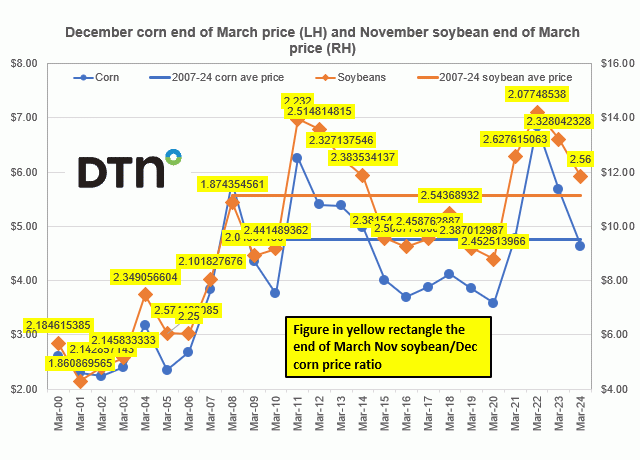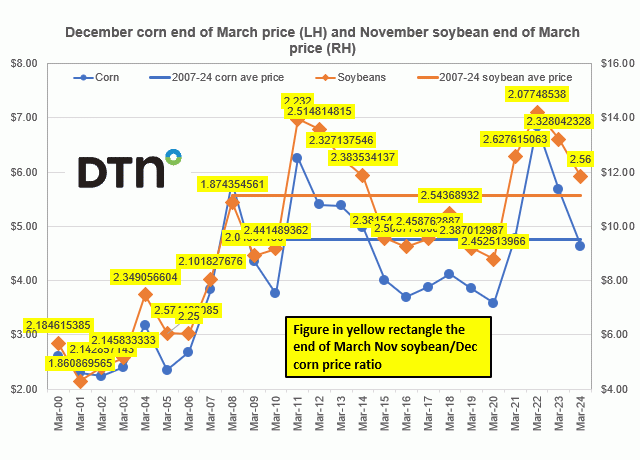Fundamentally Speaking
Lowest Corn Fed Per GCAU in 10 Years
Among the reports USDA will release on Friday is the quarterly on and off grains stocks report as of December 1.
There is a lot of interest in the corn figure as this the way trade gauges feed/residual demand.
This year's U.S. corn feed demand has been pegged at 5.275 billion bushels (bb) or 134.0 million metric tons (mmt) and that would be the lowest figure since 5.118 bb was estimated back in the 2015/16 season.
This is based on a number of factors including the use of other energy feed sources such as wheat and various byproducts such as distillers' grain and corn gluten feed, the lowest number of grain consuming animal units (GCAU) since the 2017/18 marketing year and the second highest average farm price ever at $6.60 per bushel that has also constrained the amount of corn used in animal feed rations.
This chart is a scatterplot showing the metric tons of corn per grain consuming animal unit along the y-axis vs. the average farm price expressed both in nominal terms or the actual figure the USDA posts and the real average farm price which is the nominal price adjusted for inflation.
The 2022/23 corn per GCAU fed figure at 1.35 metric tons (mt) is the lowest since 1.19 mt was seen in the 2012/13 season and other than the two years before that at 1.23 mt/GCAU in 2011/12 and 1.31 mt/GCAU on 2010/2011 you would have to go back to the 1988/89 season to find a lower number at 1.30 mt/GCAU.
The nominal average farm price values show a very good r squared of 76.5% while the real average farm price at $3.88 using 2000 as the base year is the highest average farm price adjusted for inflation since again the 2010-2012 period as the 70% r squared for this price series explains about 70% of the variability in corn fed per GCAU.
The final point is 1.35 mt/GCAU fed figure is right at real average farm price trendline while nominal price indicates corn feed use should be lower.
(c) Copyright 2023 DTN, LLC. All rights reserved.
P[L1] D[0x0] M[300x250] OOP[F] ADUNIT[] T[]






Comments
To comment, please Log In or Join our Community .